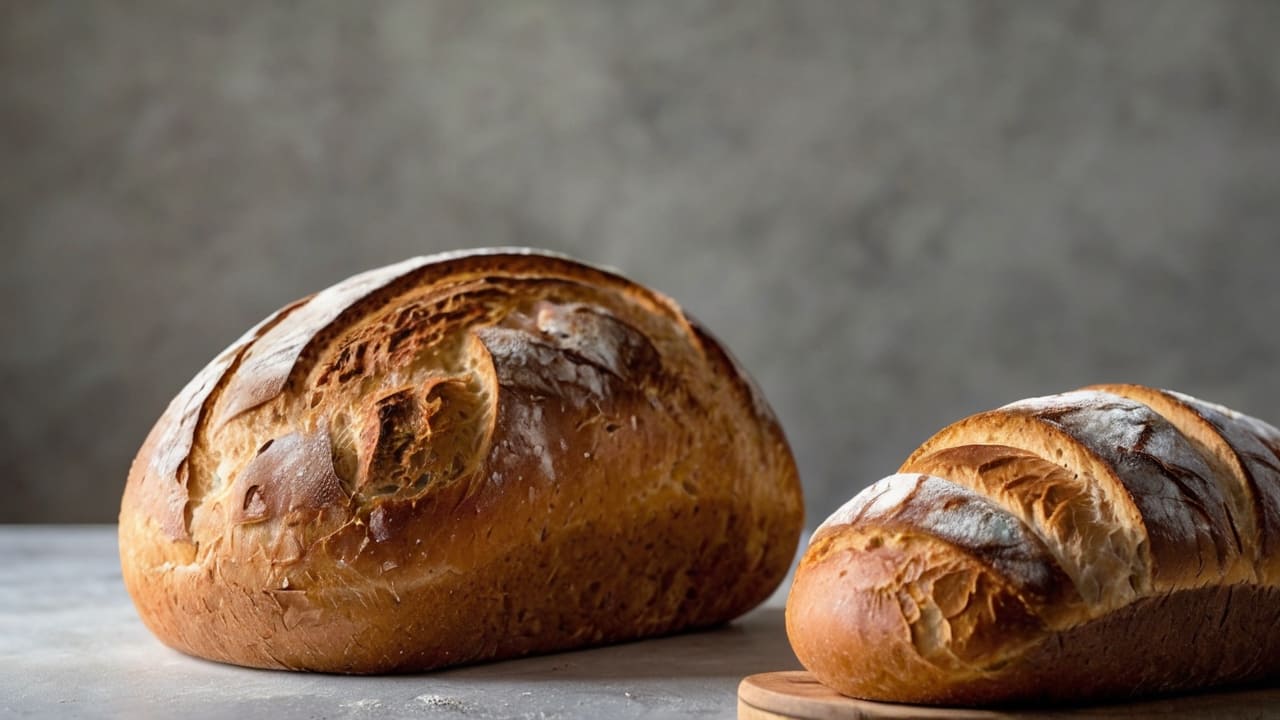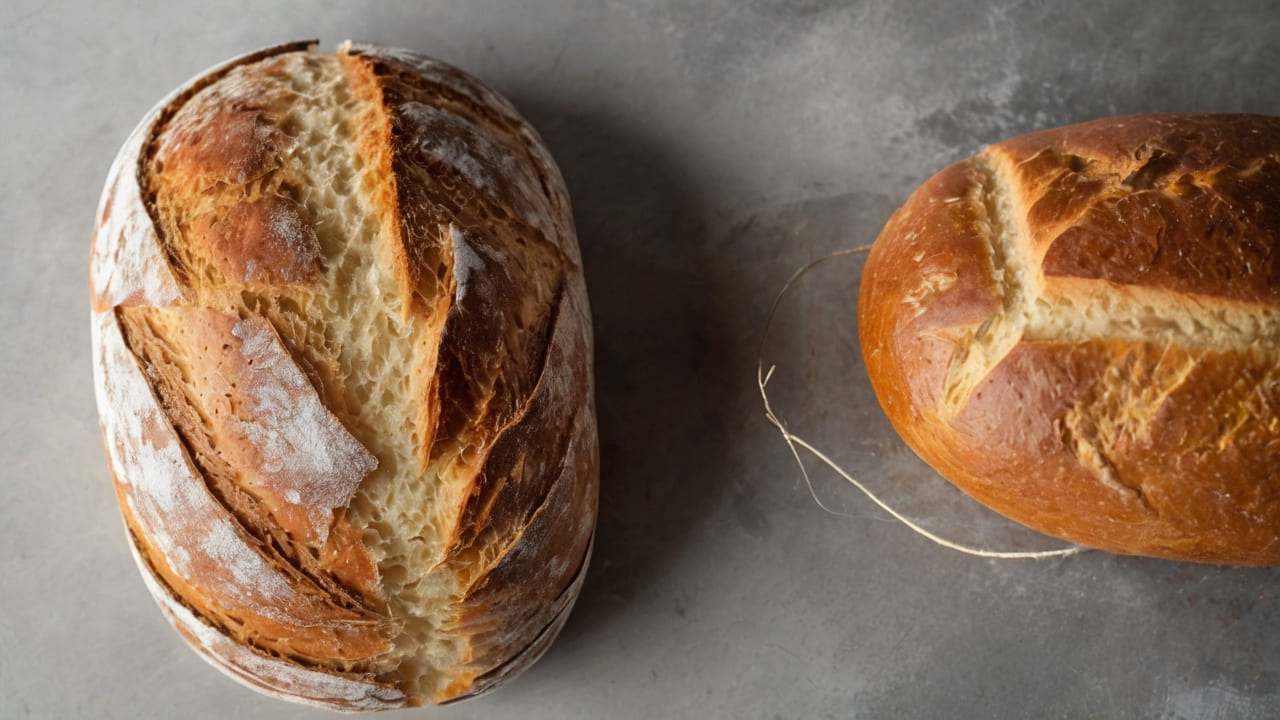
What is Used to Make Bread Soft and Fluffy? Discover the Secrets
What is Used to Make Bread Soft and Fluffy?

There’s nothing quite like the smell of freshly baked bread wafting through the house. But what makes bread soft and fluffy? Whether you're a seasoned baker or just getting started, understanding the science behind that perfect loaf is essential. Bread’s texture and fluffiness aren't just about the ingredients but also the technique used during preparation. Let's dive into what it takes to make bread soft and fluffy, and why it's worth every bit of effort.
Understanding Bread Basics: The Role of Gluten and Yeast

Gluten and yeast are the dynamic duo behind soft and fluffy bread. Gluten, a protein found in wheat, forms a network that traps gases produced by yeast, leading to the rise of the dough. This process is crucial for developing the bread's structure, allowing it to hold air and become fluffy.
When yeast ferments the sugars in the dough, it produces carbon dioxide. This gas gets trapped in the gluten network, causing the dough to rise. The elasticity and extensibility of gluten make it possible for the dough to expand without collapsing, giving the bread its soft, airy texture.
But yeast and gluten alone aren't enough. Other factors play a role in achieving the perfect loaf.
The Importance of Ingredients: Flour, Water, and Fats
Flour is the foundation of bread, and choosing the right type of flour is key. High-protein flours, like bread flour, have a higher gluten content, which is essential for making bread that rises well and has a chewy texture. All-purpose flour can work, but for the fluffiest results, bread flour is the best choice.
Water hydrates the flour, activating the gluten and helping to form the dough. The amount of water used in the recipe affects the dough's consistency. More water generally results in a softer crumb, as it allows the gluten to expand more, trapping more air bubbles.
Fats, like butter, oil, or eggs, are also crucial. They coat the gluten strands, making them more flexible, which contributes to a softer texture. Fats also add moisture to the bread, preventing it from drying out too quickly.
The Magic of Kneading: Developing Gluten for Softness

Kneading is an essential step in bread making. It’s the process that transforms a sticky mess of flour and water into a smooth, elastic dough. Kneading develops the gluten network, ensuring that the dough can stretch and trap gases effectively. This process is what gives bread its soft, fluffy texture.
But how long should you knead the dough? It varies depending on the recipe, but generally, dough should be kneaded until it is smooth, elastic, and slightly tacky. Over-kneading can make the bread tough, so it's important to find the right balance.
Fermentation: Allowing Dough to Rise
After kneading, the dough needs to rise—a process known as fermentation. During this time, yeast ferments the sugars in the dough, producing gases that cause the dough to expand. This first rise is crucial for developing the bread's flavor and texture.
Temperature and time are critical factors in fermentation. A warm environment speeds up fermentation, while cooler temperatures slow it down. However, a slower rise often results in better flavor, as it gives the yeast more time to work.
After the initial rise, the dough is punched down to release excess gas and then allowed to rise again. This second rise, or proofing, helps to refine the texture, making the bread even softer and fluffier.
Adding Steam: Creating a Soft Crust
While the interior of the bread is important, the crust also plays a role in the overall experience. Adding steam to the baking environment helps create a soft, tender crust. Steam keeps the surface of the dough moist during the initial stages of baking, allowing the bread to expand fully before the crust hardens.
There are various ways to introduce steam into your oven. You can place a pan of water in the bottom of the oven, spray water onto the dough before baking, or even bake the bread in a Dutch oven, which traps steam around the dough.
The Role of Sugar: Sweetening and Tenderizing
Sugar isn’t just for sweetness—it plays a vital role in making bread soft and fluffy. Sugar provides food for the yeast, helping it to ferment more effectively. It also tenderizes the dough by absorbing some of the water and interfering with gluten formation, leading to a softer crumb.
However, too much sugar can inhibit yeast activity, so it's important to follow the recipe's guidelines. If you're experimenting with adding more sugar, do so in small increments to avoid affecting the bread's rise.
Milk and Dairy: Enhancing Flavor and Texture
Adding milk or dairy products to your bread dough can significantly enhance both flavor and texture. Milk contains fats and sugars that enrich the dough, contributing to a softer crumb and a golden-brown crust. The proteins in milk also add structure to the bread, making it tender yet sturdy.
Incorporating ingredients like buttermilk or yogurt can add a slight tanginess to the bread, which can complement the flavors of the other ingredients. These dairy products also contribute to a softer, more tender crumb.
Enhancing Softness: The Tangzhong and Yudane Methods
For those looking to take their bread's softness to the next level, the Tangzhong and Yudane methods are worth exploring. These techniques involve cooking a portion of the flour and water (or milk) into a roux before adding it to the dough. This pre-cooked mixture helps to retain moisture in the bread, resulting in an incredibly soft and fluffy texture.
The Tangzhong method, originating from Japan, is commonly used in Asian-style milk bread recipes. Similarly, the Yudane method, popular in Japanese baking, achieves similar results but with a slightly different technique.
These methods may add an extra step to your bread-making process, but the results are well worth it. The bread stays soft and fresh for longer, making it perfect for sandwiches or toast.
Why Enzymes Matter: Breaking Down Starch for a Softer Bread
Enzymes, particularly amylase, play a crucial role in bread making. Amylase breaks down starches in the flour into simpler sugars, which yeast can then ferment. This process not only feeds the yeast but also contributes to the softness of the bread by creating a more tender crumb.
Commercial bakeries often add enzymes to their dough to enhance the softness and shelf life of their bread. While these enzymes are not typically added in home baking, understanding their role can help you make better choices in your ingredients, such as using malted flour or adding a small amount of diastatic malt powder.
The Final Bake: Timing and Temperature
Baking is where all your efforts come together. The timing and temperature of baking can make or break your bread. If the oven is too hot, the bread will brown too quickly on the outside before fully cooking on the inside. If it’s too cool, the bread may not rise properly, resulting in a dense texture.
The ideal baking temperature for most bread is between 350°F and 450°F, depending on the recipe. Baking at the right temperature ensures that the bread rises properly and develops a golden-brown crust without burning.
It’s also important to know when the bread is done. A good indicator is the hollow sound the bread makes when tapped on the bottom. An internal temperature of about 190°F to 200°F is also a reliable sign that your bread is fully baked.
How Professional Bakers Achieve Soft and Fluffy Bread
Professional bakers often have tricks up their sleeves to achieve consistently soft and fluffy bread. One of the secrets is using pre-ferments, such as poolish or biga, which are mixtures of flour, water, and a small amount of yeast that are allowed to ferment before being added to the final dough.
These pre-ferments add complexity to the flavor and improve the texture of the bread. They also help to extend the shelf life of the bread by making it stay soft for longer.
Another professional tip is the use of bread improvers or conditioners. These additives, which can include enzymes, emulsifiers, and acids, enhance the dough’s performance, making it easier to handle and resulting in a softer, more consistent crumb.
Common Mistakes to Avoid When Baking Soft and Fluffy Bread
Even experienced bakers can make mistakes that result in dense or dry bread. One common mistake is not kneading the dough enough. Without sufficient kneading, the gluten network doesn’t develop properly, leading to a dense loaf.
Another mistake is over-proofing the dough. If the dough is allowed to rise for too long, it can become over-proofed, causing it to collapse in the oven and resulting in a dense, gummy texture.
Lastly, improper baking temperature can ruin an otherwise perfect dough. Always preheat your oven and use an oven thermometer to ensure it’s at the correct temperature before baking.
Final Thoughts: Perfecting Your Bread Baking Skills
Making soft and fluffy bread is both an art and a science. By understanding the role of ingredients like gluten, yeast, fats, and sugar, and mastering techniques such as kneading, fermentation, and baking, you can consistently achieve bakery-quality results at home. Whether you're using traditional methods or experimenting with new techniques like Tangzhong, the journey to the perfect loaf is a rewarding one.
And if you're looking for a bread maker that can help you achieve these results with ease, check out Bestbreadmaker.store for the best recommendations. From kneading to baking, the right machine can make all the difference in your bread-making experience.


